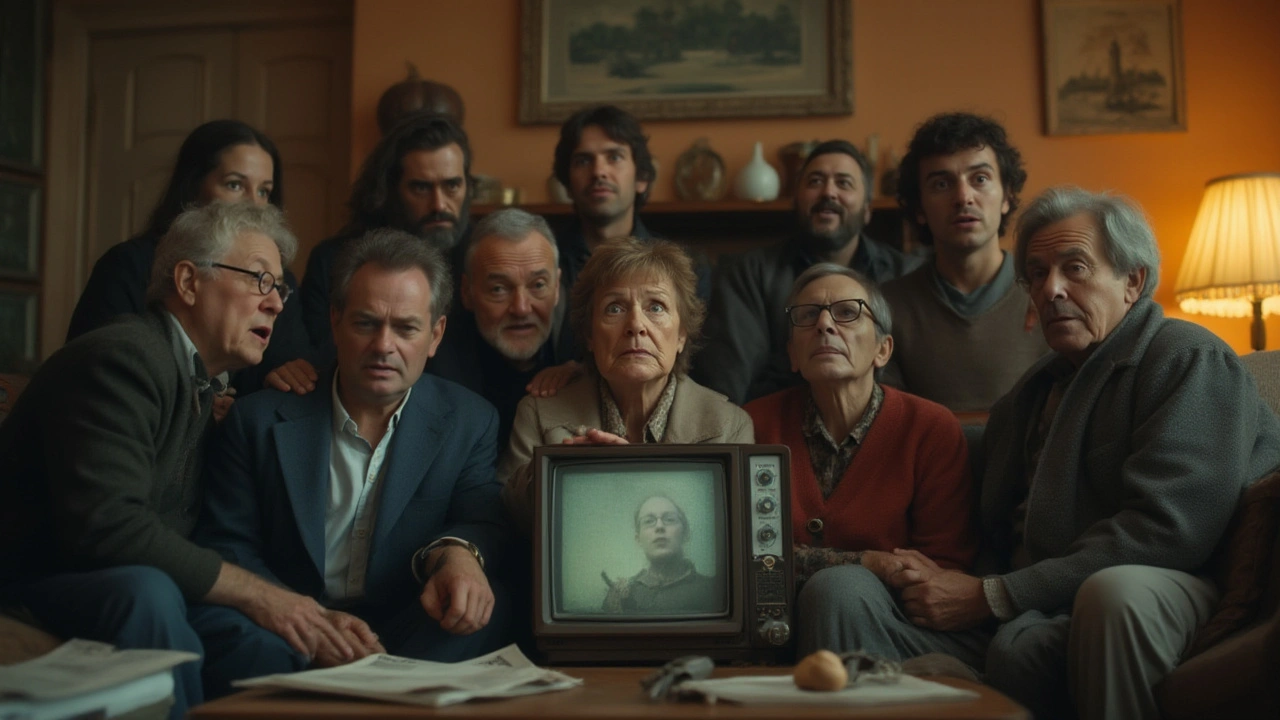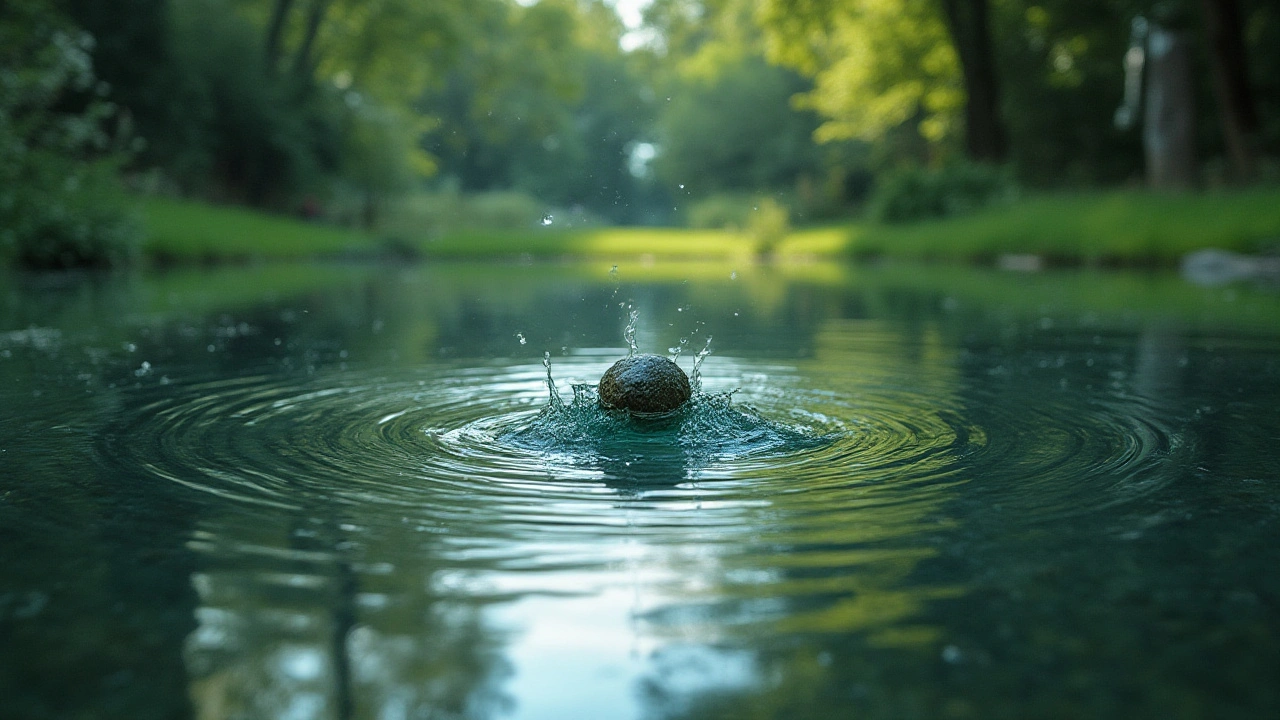
If you woke up tomorrow and everything was a bit different — money, power, borders, school, even your daily latte — you'd want to know why, wouldn't you? That's exactly what happened before, and most people never even realised just how fast the ground shifted underneath their feet. The event that changed the world forever wasn't announced with fireworks. Sometimes, these moments creep up so quietly, it feels like nothing happened at all. But when you look back, it’s clear — what came after could never go back to what came before. So, what is the single event that changed the course of humanity, for better or worse, and still echoes in everything from what you eat for breakfast to how you talk to your mate across the globe?
The Day the World Stood Still: The First Use of the Atomic Bomb
If you ask people which event truly changed everything, some will rattle off the moon landing or the fall of the Berlin Wall, but nothing comes close to the morning of August 6, 1945. Hiroshima. In one blinding flash, a single bomb did what thousands of years of arrows, muskets, and cannons never could: It changed the rules of power, war, science, and fear all at once. Before this, wars ended when armies gave up or cities fell. Afterward, everyone understood: One push of a button could end millions of lives in seconds. For the first time, humanity had the power to wipe out itself. The world suddenly felt very small, and history split in two — before Hiroshima, and after.
Let’s talk about scale. The bomb dropped on Hiroshima released energy equal to about 15,000 tons of TNT. The city was instantly devastated. Some 70,000 people died within minutes. Three days later, Nagasaki faced the same. It wasn’t just the physical destruction — it was the message to the world: knowledge and technology could rewrite the rules overnight. The arms race began. Political alliances weren’t just about soldiers or tanks anymore, but about who could build, hide, or launch these new weapons. Geography suddenly meant less, and science meant more. The world would never again trust peacetime as peacetime. You can actually look at a time chart of nuclear tests since 1945 and see the numbers skyrocket across every major power from the US to the Soviet Union, France, Britain, and China. Have a peek at this quick data rundown:
| Country | Nuclear Tests (1945-2025) |
|---|---|
| United States | 1,032 |
| Soviet Union/Russia | 715 |
| France | 210 |
| China | 45 |
| UK | 45 |
Those numbers aren’t just stats — they represent a new normal where fear and “mutually assured destruction” shaped everything from Hollywood movies to national budgets. Even today, policies around missiles, treaties, and military funding trace right back to those spent minutes in Japanese skies. Everyday things, from evacuation drills in schools to the shape of city skylines (think bunkers and fallout shelters), took on new meaning because of that one event. Kids in Manchester practiced hiding under desks because of what happened thousands of miles away.
If you want a grim tip: the International Campaign to Abolish Nuclear Weapons keeps up-to-date maps you can browse online to see which countries house nukes now. Study those maps, and you see not just weapons but ghostly fingerprints of Hiroshima’s aftermath — cold war standoffs, proxy wars, emergency treaties, and the fact that even today, a nuclear accident is just a human error away. The event changed global thinking: every political handshake, every military parade, every dark-room negotiation rests on an invisible threat born that morning in 1945.
Ripple Effects: How Everyday Life Was Transformed
People love to imagine history in neat boxes — battle here, treaty there, problem solved. But the atomic bomb didn’t stay in a museum display; it followed people into university halls, hospitals, offices, and even living rooms. Everyday tech we take for granted, from MRI scans to some cancer treatments, spun directly out of nuclear research. But it also means my parents, and probably yours, grew up in the shadow of “the bomb scare.” Schoolchildren memorised how to ‘duck and cover’, and families built backyard bunkers in the States and Russia. Imagine asking your mate over for tea, then showing him your fallout shelter—welcome to the 1950s apocalypse chic!
The Cold War that followed was shaped by paranoia and secrecy. Governments monitored scientists, built warning systems (you know those sirens?), and invented new forms of protected communication. Even language changed. ‘Nuclear family’ went from meaning parents and kids to conjuring up images of safety and shelter. The Olympics, Eurovision, and even chess tournaments became arenas for showing off power without dropping bombs.
The global political map got a revamp, too. NATO, the Warsaw Pact, and countless arms treaties were born because countries didn’t trust each other not to push the button. Spying became a new art. Satellite tech — now used in your phone’s GPS — began as a tool to keep an eye on nuclear enemies. Anti-nuclear protests exploded, especially in the late ‘70s and ‘80s. The Greenham Common Women’s Peace Camp in England showed that ordinary people wouldn’t just accept this “new normal.” People started asking: Is fear the only way to peace?
Here’s a handy tip: If you’re interested in how nuclear science powers peace, look up “Atoms for Peace” projects in the 1950s. Technologies like nuclear energy, desalination (turning seawater into drinking water), and even food preservation have roots in nuclear research. But there’s always a catch — energy comes with risks. Chernobyl and Fukushima proved that peaceful science can also blow up in your face (literally). So, whenever you hear about debates on green energy, think about how the atomic age shapes arguments today — it’s all downstream from 1945.
Social movements and pop culture thrived on this undercurrent of anxiety. Watch old Bond films, Godzilla, or even The Simpsons — the atom’s shadow is everywhere. Musicians sang about mushroom clouds, fashion designers sold “atomic prints,” and pet tortoises got named “Sputnik.” Even as we laugh, the fear lingers underneath.

Unseen Changes: The Psychological and Social Fallout
It’s easy to count how many buildings got flattened or how many treaties got signed — but how do you count fear? Since the atomic bomb, psychologists everywhere have studied what living with that kind of existential threat does to a person. Some results are sobering. Rates of anxiety and existential dread soared in the ‘50s and shaped every decade after. Remember those films showing kids hiding under chairs or adults scanning the news for ‘DEFCON’ levels? That wasn’t just paranoia. It was a new reality: everyone, from world leaders to Manchester bus drivers, lived with the knowledge that everything could vanish in a minute.
If you’re curious, there’s strong research (like the work by Lifton and Markusen) showing that communities exposed to the bomb — either in Japan or later from weapons testing — had spikes in PTSD, survivor’s guilt, and a cultural angst that never quite fades. It seeps into art, music, even city planning. After WWII, cities rebuilt not just for beauty or convenience, but for resilience — extra strong walls, wider roads, and building codes meant to handle disasters that, before, no one could imagine.
Tips for diving deeper: Museums in Hiroshima and Nagasaki offer online resources and virtual tours. Survivor stories (search for hibakusha accounts) give a raw, first-person view that textbooks can’t. Those stories matter. For decades, governments hushed up details about radiation victims, birth defects, and cancer rates. Only much later did real facts come out — and when they did, they terrified people, but also inspired huge movements for peace, openness, and whistleblowing.
Social trust frayed. It’s no accident that the rise of conspiracy theories and doomsday cults tracked closely with nuclear anxiety. If you think “fake news” and suspicion of government are new, look up pamphlets from the ‘60s warning about secret bunkers or apocalypse bunkers for the wealthy. The public learned: what happens in secret labs can change lives across the world in a blink, so people started demanding more transparency, democracy, and grassroots activism.
Even as the decades rolled on, new generations kept that anxiety somewhere in the background. Today, “nuclear winter,” peace treaties, global warming, and debates over AI weapons all echo back to that turning point — how much destruction is too much? How much change can society handle before it breaks?
Living in a Changed World: What Now?
Sometimes, it feels far away—nukes are for old textbooks or history class, right? Not quite. As recently as last year, headlines screamed about arms deals, missile tests, and world leaders hinting at the unthinkable. The world hasn’t “gotten over” the atomic age. Every major international conflict, from tensions in Ukraine to standoffs with North Korea, features the same silent question in the background: Who has the bomb? Who might use it?
But here’s the strange thing: out of the rubble and fear came unexpected good. The threat of easy destruction forced countries to talk, to sign treaties, and create global networks. The United Nations agreed on rules for not just nuclear arms, but for human rights, disaster response, and scientific cooperation. These weren’t just wishy-washy declarations; they strapped hard lessons learned from Hiroshima into real laws. Every time you watch a peaceful protest, sign a petition, or join a climate march, you’re living with freedoms that those tense nuclear years ironically helped to protect.
People learned to adapt, to question, and to hope. Movements calling for disarmament, peace education, and cross-border friendship found new life. The Doomsday Clock, started in 1947, is more than a scary image — it’s a community warning system, a way for scientists and citizens to say: we’ve got power, but also responsibility. If you want to get involved, you don’t need a degree in particle physics. Groups like ICAN (International Campaign to Abolish Nuclear Weapons) or the Campaign for Nuclear Disarmament (CND) in the UK run events and campaigns you can join right now.
So, next time you wonder about the most important thing that ever happened to the world, don’t just think about one city on one morning. Think about the new world born in that moment. Our hopes, fears, science, art, even weekend politics—all live in that shadow. We can’t ever go back, but maybe, just maybe, we can do better with the power we hold now. That’s the real legacy of the event that changed the world forever.